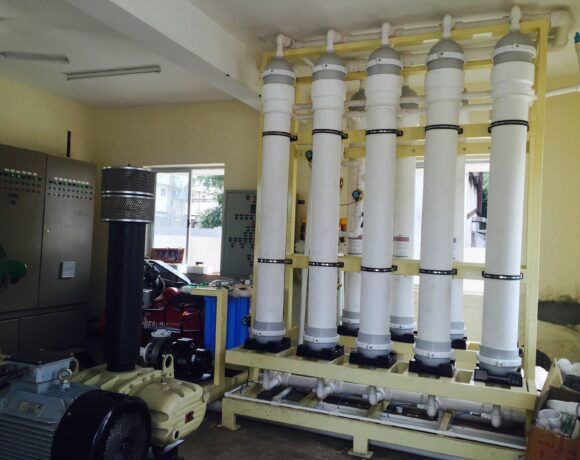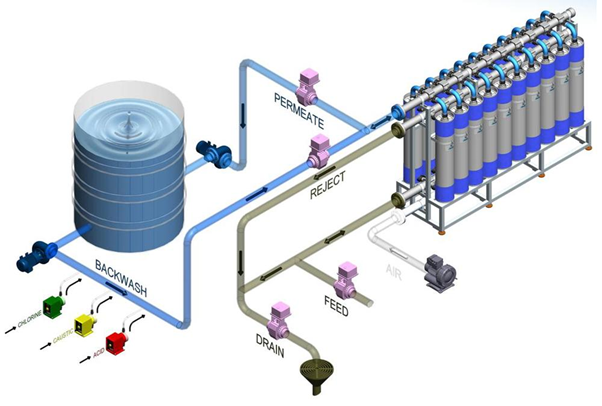Ultra filtration
UF is used as a polishing stage in the ultrapure water supply, or for reclaiming process water. When acting as a final barrier, it can remove fine particles (>0.03μ) and microorganisms from water being sent to production made from H-PVDF polymer (H=hydrophilic).“

These fibers have high resistance to chemicals, heat, and fouling, and are mechanically strong. In the modular design, the hollow fibers are bundled inside a PVC shell, ranging in size from 6.5” to 8.9” OD. These modules are positioned vertically on a skid to form a UF rack that can be pre-piped and pre-wired and ready for installation on-site. water into two parts namely
In the field of industrial process water treatment, ultra filtration are excellent ways of removing undissolved particulate and emulsified substances from water cycles and also decreasing tanks. Ultra filtration is used as a pre-treatment for reverse osmosis. The selection and dimensioning of the filter modules, filter pressure and the speed of the module flow rate for optimal process water treatment are all crucial in order for this process to work properly.
When designing ultra filtration systems, GRAM leaves nothing to chance. We use the expertise of our senior engineers and combine various design tools to achieve optimal dimensioning based on site condition
Types of UF Modules
- Tubular modules
- Hollow fiber modules
- Spiral wound modules
- Plate and frame modules

- 0.03 micron pore size for removal of bacteria (>6 log reduction), viruses (>2.5 log reduction), and particulates (<2.5 SDI)
- Improved and more consistent product quality: ultrafiltrate turbidity less than 0.1 NTU (independent of the raw water turbidity) and SDI less than 2.5
- Dead end flow, meaning that all the feed water goes through the membranes. Recovery at 95% is due to water usage for backwash requirements.
- UF can replace media filtration pre-RO (on relatively clean feedwater), providing higher quality feedwater which results in less cleaning of the downstream RO and requiring a smaller footprint.
- Filtration and cleaning operations can be highly automated, reducing labor
- Module and skid Integrity Testing can be done easily online to detect potential leakages without significant plant downtime. Membrane modules can be individually isolated for repair, maintenance or replacement without compromising the plant output.
